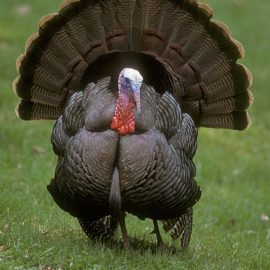
Redfish I like and learned to eat them on the Outer Banks and now they are fearing a demised state.
The redfish and its spotted tail lives large in Louisiana lore. Generations of anglers have stalked the marshes in search of them. Paul Prudhomme famously served them blackened, helping to forge the redfish’s national reputation. But lately some of the state’s most experienced anglers are raising concern over what they believe is a sharp decline in the species’ numbers. The state says it’s too early to know if those observations are backed up by data. Results of an assessment on what is officially known as the red drum are due in the months ahead. In the meantime, varying theories for any persistent decline – if it indeed turns out to be true – have been cast about. They’ve ranged from Louisiana’s relatively liberal catch limits to the loss of habitat due to erosion and subsidence. The large commercial menhaden boats that prowl the coast have also taken their share of blame. As is often the case with fishing-related topics, not all anglers agree on even the basics, such as whether there is a decline. Nonetheless, the concern has been widely shared, reverberating in conversations from social media to marina docks.
nola.com
There is even a YouTube submission on this problem.
Todd Masson, whose “Marsh Man Masson” YouTube channel is popular among Louisiana’s recreational fishing community, has been particularly vocal. He posted a video on Aug. 19 describing the situation as unprecedented and calling for tighter catch limits. As of Friday morning, the video – titled “Louisiana’s Redfish Population Has Collapsed” – had nearly 22,000 views. “I’ve covered the outdoors in Louisiana for 30 years. Obviously I’ve seen a lot in that time,” Masson said in a later interview. “But I’ve never seen a fishery decline as rapidly as the redfish fishery has declined. It’s really across the board. Now, you will have guys who say, ‘I’m catching plenty of redfish.’ Of course. You’re always going to have that.” Masson noted he was referring to areas east of the Atchafalaya, since that’s where his information tends to come from. Others agree that something seems off with the redfish population, though they have cast it in less apocalyptic terms.
There seems to be a mismatch as soe are not seeing lesser numbers of the fish.
Don Dubuc, the longtime Louisiana angler whose outdoors show airs on WWL and other radio stations, said that while he’s definitely aware of the problem, it’s too early to call for a reduction in limits. “I’m hearing that people are just having more trouble finding redfish and catching them this year than they have in recent times,” said Dubuc. “And the thing that’s strange about it is it’s not any one particular area. It seems to be all across the state, because I get reports from Calcasieu all the way to St. Bernard and everything in between.” There are others who say there’s no problem at all. Andrew Messenger, who owns Hoss Bowfishing Charters out of Hopedale, said: “They’re just in different areas than they’ve been in years past. I think the fish have always moved around, and I think people are stuck fishing old spots.”
Redfish is a desired fish and one that at times has been the most sought.
Redfish have long been a sought-after species for Louisiana inshore anglers, perhaps rivaling speckled trout in popularity. Tactics used include everything from bowfishing to fly fishing and the classic tried-and-true: a hook baited with live shrimp under a cork. They live in the interior marshes, lakes and bayous until they reach spawning age, then head offshore, where the extra large “bull reds” can be found. The state says they can live more than 40 years. Their bodies have a slight reddish tint and their tails carry one or multiple spots. Commercial fishing for red drum is no longer allowed in the state; it was banned in the late 1980s amid the blackened redfish craze inspired by Prudhomme. An analysis by Louisiana Sea Grant, however, found that the decline back then had actually begun before the dish became popularized. Recreational regulations have been tightened over the years, though they remain looser in Louisiana, whose eroding marsh has provided extraordinary habitat for the species, than in neighboring states.
The daily limits are set.
Current regulations limit anglers to five redfish per day of between 16 and 27 inches. One fish over 27 inches may be kept. In Mississippi, the recreational limits are three per day of between 18 and 30 inches, with one over 30 inches allowed per person. If there is a decline, the potential causes can seem endless: Has a food source for redfish been less plentiful? Is there some sort of disease spreading? Has the loss of wetlands gradually taken a toll? Have anglers simply caught and kept too many fish? And while redfish tend to be especially resilient in freshwater, some have questioned whether the recent repeated openings of the Bonnet Carre spillway have somehow played a role.
There are a lot of redfish but the numbers are not know.
The state has heard the concerns. Jason Adriance, finfish program manager for the Louisiana Department of Wildlife and Fisheries, said it is impossible to draw any conclusions without reliable data. What is known as a stock assessment will help supply that, and Adriance hopes to have results by year’s end. The assessment will not only help determine if a decline is underway, but also if it is occurring in a particular part of the species’ lifespan. For redfish, such assessments are done on an as-needed basis. The last redfish assessment was a federal one done back in 2004. “We hear the same things,” Adriance said. “We hear what the anglers are saying. And we’ll look at what we see in our samples and we’ll plug it all in.” No matter how it turns out, the debate will undoubtedly roll on, from the fishing guides teaching out-of-state visitors how to spot redfish tailing through the marsh to the dockside detectives theorizing over beers.
Those involved with conservation are also interested in finding out about the redfish.
David Cresson, who heads conservation organization CCA Louisiana, said he, too, has certainly heard the complaints and noticed what seems to be a change in “one of our most iconic species.” He said the problem seems to be focused in the state’s eastern waters. In St. Bernard and Plaquemines, and potentially parts of Jefferson and Lafourche parishes, he said, “there definitely seems to be something going on that’s making them more difficult to target and catch.” Masson says it’s time to act. Referring to Louisiana’s coastal marshes, he said: “Nature could not have designed a more perfect nursery ground for speckled trout and redfish. So we have historically produced just an insane amount of fish and those liberal limits were justified. “That’s no longer the case,” he said.
Redfish are a desired catch and should be saved. Maybe a survey is all that is needed.



